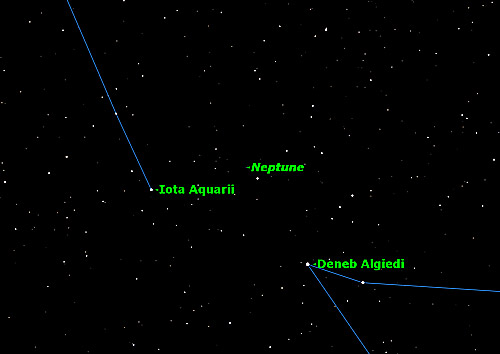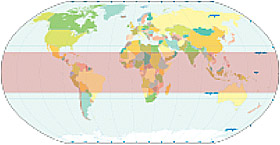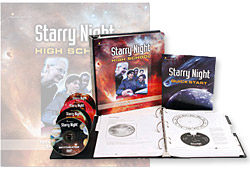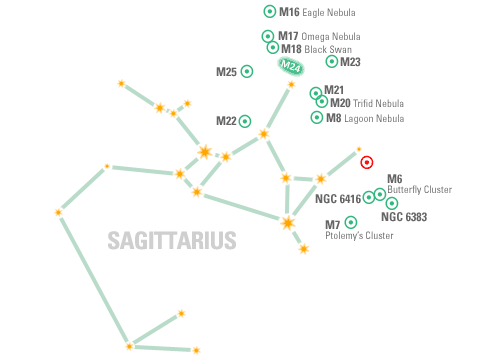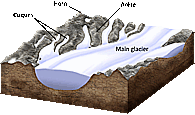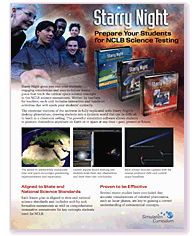 |
||||||||||||||||||||||||||||||||||||||||||||||||||||||||||||||||||||||||||||||||||||||||||||||||||||||||
|
For education orders please call 1-877-290-8256. Welcome again to our monthly newsletter with features on exciting celestial events, product reviews, tips & tricks, and a monthly sky calendar. We hope you enjoy it!
Earth’s year is one of the most important units we use to mark time. Birthdays occur a year apart. The year is divided four ways into the seasons. Measuring the exact length of the year was a major challenge for generations of astronomers. Now that we have methods of extremely accurate time measurement such as atomic clocks, we find that the Earth’s year is no longer a reliable standard of time measurement, and must be adjusted periodically by adding or removing leap seconds. But Earth’s year is only one of many years in the solar system. Little Mercury zips around the Sun in a mere 88 Earth days, making most of us pretty ancient in “Mercury years.” Venus takes a more leisurely tour of the Sun, its “year” being 225 Earth days long. Mars takes nearly twice as long as the Earth: 1.881 Earth years or 687 Earth days. The outer planets have increasingly long years, the relationship being governed by Kepler’s Third Law: The square of the orbital period of a planet is directly proportional to the cube of the semi-major axis of its orbit. Jupiter’s year is 11.962 Earth years, Saturn’s is 29.32, Uranus 84.4 and Neptune 165.8. This last is of special interest this year because on September 23 2010 it will be 164 years since Neptune’s discovery in 1846, just short of one “Neptune year.” This means that Neptune will be returning to the same spot in the sky where it was first discovered, having completed one full orbit around the Sun. Here is where Neptune was on September 23, 1846:
And here it is, 164 later, in 2010:
In the time it’s taken Neptune to make one orbit around the Sun, Uranus has completed almost two orbits, Saturn more than 5 orbits, and Jupiter nearly 14 orbits. An interesting way to demonstrate Neptune’s slow motion against the stars compared to its brethren closer to the Sun is to use Starry Night to center on Neptune in 1846 and then advance time to 2010. It’s best to move the viewing location to the center of the Earth, switch to Ecliptic Orientation (under the Options menu), and Hide the Horizon and Daylight under the View menu. Then advance time in 1 year steps. You’ll notice when you do this that only once in 164 years is there a conjunction between Uranus and Neptune, in 1993. That’s because both planets are in motion. By the time Uranus gets back to where it last had a conjunction with Neptune, 84 years have passed and Neptune is now on the far side of the Sun! It has to go all the way around again to catch up. Think of race cars on a track. This is also why, even though one Mars year is 1.881 Earth years, it’s actually about 26 months between successive oppositions of Mars. Geoff Gaherty
The word “tropics” usually conjures up images of palm trees, sun, sea and sand. And so it should. As shown on the map below, a section of the Earth about 47 degrees wide and centered on the equator, is known as the tropics. In this region, the Sun is directly overhead at least once during the year.
The Tropics The northern boundary is known as the Tropic of Cancer and currently lies 23.44 degrees north of the equator. Anywhere along this line, the noonday Sun will be directly overhead on June 21. This, of course, is the summer solstice in the northern hemisphere and marks the greatest distance the Sun travels north of the equator in its yearly journey along the ecliptic.
Sun at June Solstice Six months later, on December 21, the Sun reaches its greatest distance south of the equator defining the Tropic of Capricorn, the southern boundary of the tropics.
Sun at December Solstice The reason for the Sun’s swing north and south of the equator is the axial tilt of the Earth, currently about 23.5 degrees. This causes the ecliptic to be inclined to the equator by the same amount and defines the northern and southern limits of the Sun’s position, and hence the latitudes of the Tropics. Because the tilt of the Earth’s axis is slowly changing, so are the coordinates of the Tropics. Currently the latitudes are 23º 26.3’ north and south of the equator. The slowly changing axial tilt decreases these latitudes by about 0.008’ per year. That’s about 50 feet. Running the file Sun.snf allows you to see the Sun’s journey along the ecliptic as well as the relationship between the ecliptic and the equator. For a more detailed discussion of the Sun’s position at the solstices see the June edition of Starry Night Times.
Herb Koller
Kids on their way back to school? You already know how great Starry Night is in the home, but our educational products are where we REALLY shine. Independent studies have confirmed that Starry Night Educational Software is a highly effective classroom resource. Now, we've taken that proven model and applied the same effective principles to Earth Science. Give your kids an advantage! When you refer their teacher to our educational solutions, the school will receive 10% off their purchase and you'll receive 15% off your next selection at the Starry Night Store! Here's how it works:
The 2017 Total Eclipse of the Sun On August 21, 2017 sky watchers in part of North America will be able to witness a total solar eclipse. This eclipse will be the first total solar eclipse visible from the United States since 1991. A solar eclipse occurs when the Moon passes between the Earth and the Sun, totally or partially blocking the view of the Sun from the Earth. Pedro Braganca
M8 "The Lagoon Nebula" is the brightest nebula after the great Orion nebula. It's actually more massive than M42 but is farther away: 4,500 lightyears distant compared with 1,500 lightyears. M8 is best viewed with a wide-field eyepiece. Less spectacular, but still worth some time, M20 "The Trifid Nebula" is also easily seen in binoculars; a telescope will bring out the dust band that gives the nebula is shape and name. M21 is a small rich open cluster in the same field of view as M20. M23, excellent in small scopes, is an open cluster seen in binocs, as is M25. M24 "Delle Caustiche" is a large and lovely "frothy" looking region seen easily in binoculars. It's actually part of the Milky Way and only stands out as a distinct patch because, like M23 and M25, it sits in front of a dark nebula that obscures our line of sight to the core of the galaxy. (By the way, the very center of our galaxy is marked above with a red target symbol.) M22 is a sweet globular cluster, the third-brightest in the sky. Populated by half a million stars, it's distant by a mere 10,000 lightyears, making it the nearest glob to Earth. M16 and M17 are two nebulae, the latter in particular a rewarding target. M16, however, is notable for being the location of "The Pillars of Creation" the iconic image produced by the Hubble Space Telescope. M18 "The Black Swan" is a pretty open cluster with about 40 members, surrounded by fainter background stars in the band of the Milky Way. Close-by in Scorpius, M6 and M7, two open clusters, are bright and obvious, and make for easy binocular objects. Telescopes open up both in rich detail and M6 is seen to be aptly named "The Butterfly Cluster". NGC 6416 is a small open cluster and NGC 6383 is a dim, wide cluster with nebulosity. Sean O'Dwyer
|
AUG 2010
|
|||||||||||||||||||||||||||||||||||||||||||||||||||||||||||||||||||||||||||||||||||||||||||||||||||||||
 |
||||||||||||||||||||||||||||||||||||||||||||||||||||||||||||||||||||||||||||||||||||||||||||||||||||||||
|
|
||||||||||||||||||||||||||||||||||||||||||||||||||||||||||||||||||||||||||||||||||||||||||||||||||||||||

